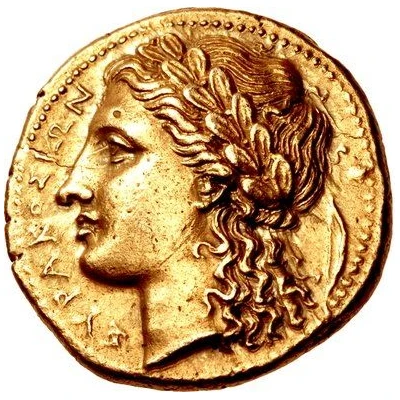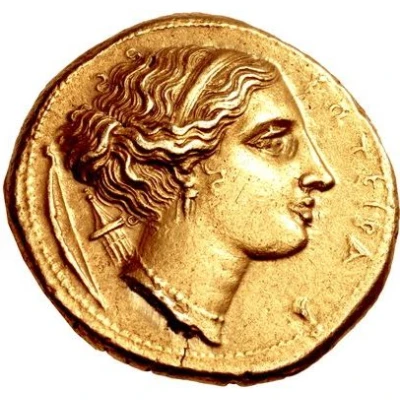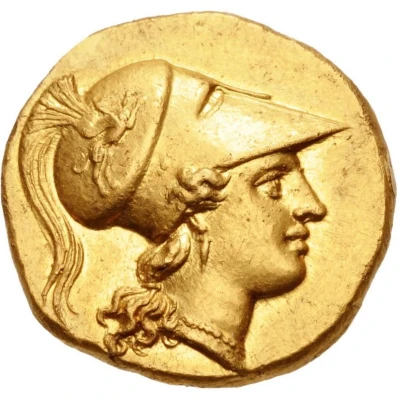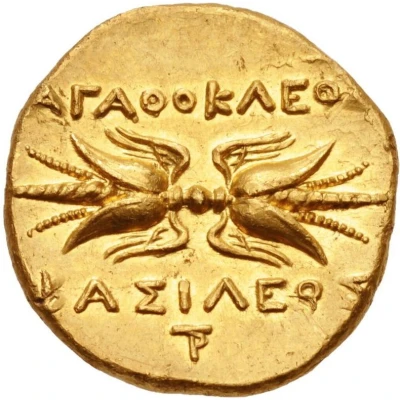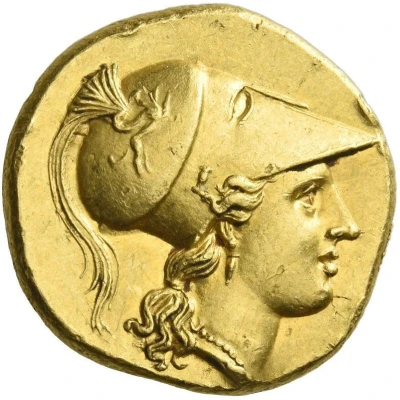
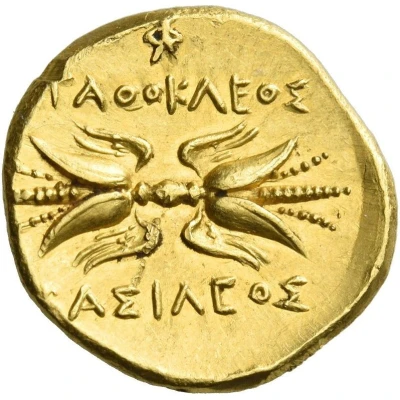

© Numismatica Ars Classica NAC AG
100 Litrai 305 BC - 289 BC
| Gold | 5.69 g | 17 mm |
| Issuer | Syracuse (Sicily) |
|---|---|
| King | Agathocles (304 BC - 289 BC) |
| Type | Standard circulation coin |
| Years | 305 BC - 289 BC |
| Value | 100 Litrai |
| Currency | Litra |
| Composition | Gold |
| Weight | 5.69 g |
| Diameter | 17 mm |
| Shape | Round (irregular) |
| Technique | Hammered |
| Orientation | Variable alignment ↺ |
| Demonetized | Yes |
| Updated | 2024-10-10 |
| Numista | N#398507 |
|---|---|
| Rarity index | 100% |
Reverse
Winged thunderbolt; above, monogram.
Script: Greek
Lettering:
AΓAΘOKΛEOΣ
BAΣIΛEOΣ
Comment
Bérend, Studies Price pl. 9, 10.
Interesting fact
One interesting fact about the 100 Litrai coin from Syracuse (Sicily) is that it features the image of a quadriga, a chariot pulled by four horses, on its obverse side. This design was a common motif in ancient Greek coinage and symbolized the power and prestige of the city-state that issued it. The coin's reverse side features the head of the nymph Arethusa, who was associated with the island of Sicily and was believed to have the power to control the island's fertility and prosperity. The combination of these two symbols on the coin reflects the importance of agriculture and trade in the ancient Greek city-state of Syracuse.
